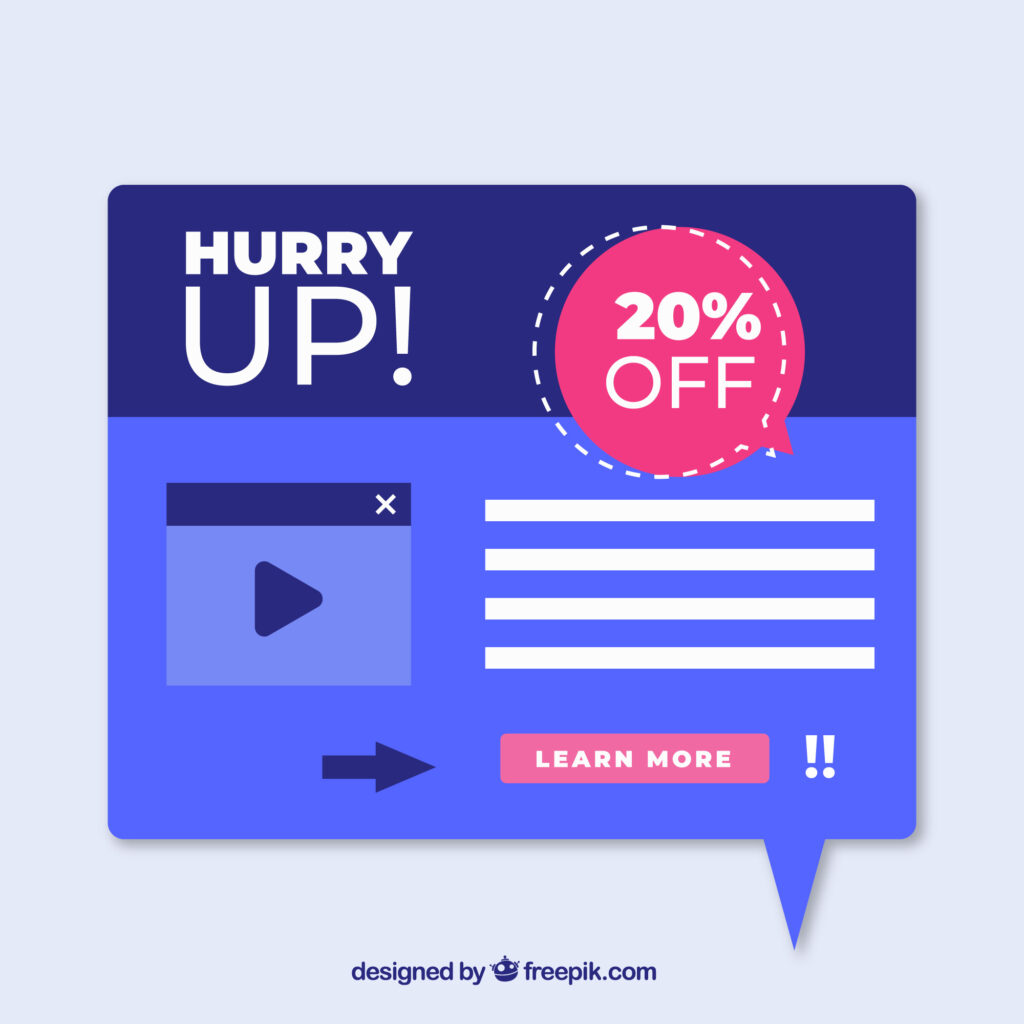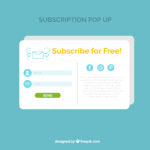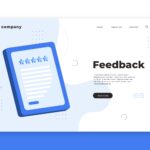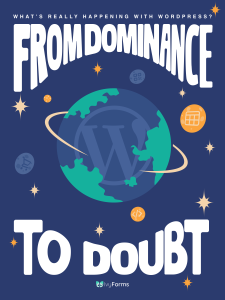WordPress is a giant. A legend. A default. It powers more than 43% of the web — an empire that has stood strong for years. But as we move into…
Table of Contents
Pop-up forms have been a staple in digital marketing for years, but they’ve also been a source of heated debate. Are they an indispensable tool for driving conversions, or an outdated nuisance that annoys users? While some argue that pop-up forms are losing their effectiveness, others believe they’re simply evolving to adapt to user expectations and new marketing trends.
In this blog, we’ll explore the current state of pop-up forms, their evolving role in marketing, and whether they still hold value for businesses. Along the way, we’ll answer key questions such as:
- What is a pop-up form?
- Are pop-up forms outbound or inbound?
- Do pop-up forms work, and are they more effective than other website forms?
By the end, you’ll have a clear understanding of where pop-up forms stand today and how to use them effectively in your marketing strategy.
What Is a Pop-Up Form?
Pop-up forms are interactive elements that appear on a website to capture a visitor’s attention and encourage them to take a specific action. These forms typically “pop up” over the content the user is viewing, making them hard to ignore.
Unlike static forms that remain embedded within a webpage, pop-up forms are dynamic and can be triggered by various user actions, such as:
- Scrolling to a certain point on the page.
- Spending a specific amount of time on the site.
- Attempting to leave the website (exit-intent pop-ups).
Pop-up forms are often used for purposes like collecting email addresses, promoting discounts, or sharing important announcements. Despite their controversial reputation, they continue to be a popular tool for engaging users and generating leads.
Are Pop-Up Forms Outbound or Inbound?
The debate about whether pop-up forms are outbound or inbound marketing tools hinges on their function and execution.
Pop-up forms are often perceived as outbound tools because they interrupt the user experience, actively demanding attention. This aligns with outbound marketing strategies, which are typically more proactive and sometimes intrusive, like cold calls or unsolicited emails.
However, pop-ups can also function within an inbound marketing framework. For example, if a pop-up offers valuable content like an ebook, discount, or newsletter signup in exchange for the visitor’s contact information, it aligns with inbound principles – attracting and engaging users based on their interests and actions.
The key lies in how pop-ups are designed and implemented. When they offer meaningful value and are triggered at the right moment (e.g., exit-intent pop-ups), they can be seen as a hybrid tool that blurs the line between outbound and inbound strategies.
Do Pop-Up Forms Work?
Pop-up forms have been proven to deliver results when implemented thoughtfully, but their effectiveness depends on various factors.
1. Conversion rates
Studies show that pop-ups can have an average conversion rate of 3.09%, with some high-performing pop-ups achieving rates as high as 9.28%. This demonstrates that pop-ups can significantly boost lead generation efforts when optimized correctly.
2. Timing and relevance
The success of pop-ups often hinges on timing and relevance. A well-timed exit-intent pop-up or a pop-up offering a discount just as the user is about to leave can make all the difference. Poorly timed pop-ups, on the other hand, risk annoying users and increasing bounce rates.
3. Design and user experience
Pop-ups that are visually appealing, mobile-friendly, and easy to dismiss are more likely to engage users. Overly intrusive or poorly designed pop-ups can harm user experience and even deter visitors.
4. Value proposition
Pop-ups work best when they offer something valuable to the user – such as exclusive discounts, free resources, or early access to products. The more relevant and enticing the offer, the better the performance of the pop-up.
5. Industry & audience considerations
Pop-up effectiveness can also vary by industry. For example, e-commerce websites may find pop-ups effective for capturing leads or driving urgency in sales, whereas content-driven sites might use them to offer additional resources. The key is to tailor pop-up campaigns to the specific needs and behavior of the audience.
6. Testing & optimization
As with any marketing tactic, testing is crucial. Running A/B tests on different types of pop-ups, offers, and trigger timings allows you to optimize for the highest conversion rates. Continually tweaking pop-ups based on performance data is an effective strategy to ensure ongoing success.
In summary, pop-ups do work, but their effectiveness is tied to thoughtful design, smart timing, and delivering real value to the user.
Are Pop-Up Website Forms More Effective Than Other Forms?
Pop-up forms are highly effective in certain scenarios, but their success is context-dependent and varies when compared to other forms like embedded forms or dedicated landing pages. Let’s break this down in detail:
Key advantages of pop up forms
Immediate visibility
Pop-ups command attention by appearing directly in front of the user, often overlaying other website elements. This makes them particularly useful for grabbing a visitor’s focus quickly, unlike static forms that might go unnoticed.
Behavior-triggered appearances
Advanced pop-ups can be configured to appear based on user behavior, such as:
- Exit-intent triggers: Shown when users are about to leave the site.
- Scroll depth: Appears after users scroll a certain percentage of the page.
- Timed delays: Displayed after a specific time on the site.
This dynamic nature ensures relevance, increasing the chances of engagement.
Lower conversion friction
Pop-up forms reduce steps in the conversion process by allowing users to sign up or respond immediately, without navigating away from the page.
Limitations of pop-up forms
Interruptive nature
Pop-ups can sometimes be intrusive, leading to a negative user experience if poorly timed or irrelevant.
Ad blockers and regulation compliance
Many users employ ad blockers that hide pop-ups. Additionally, compliance with GDPR or similar regulations may require careful handling of user data and consent, which can complicate their deployment.
Comparison with other form types
Embedded forms
- Pros: Integrated into the page, allowing users to fill out forms at their convenience without disrupting their browsing.
- Cons: Lower visibility, as they might blend into the page layout.
- Best for: Content-heavy pages where users expect to engage more deeply, like blog articles or long-form guides.
Landing pages
- Pros: Dedicated space for persuasive content, visuals, and detailed explanations.
- Cons: Requires users to navigate to a separate page, potentially increasing drop-off rates.
- Best For: High-value offers, like product demos, detailed case studies, or webinar signups.
When to choose pop up forms
Pop-ups work best in situations requiring quick engagement, such as:
- Collecting emails: For newsletters, waitlists, or early access announcements.
- Offering discounts: Encouraging purchases with time-sensitive deals.
- Gathering feedback: Conducting brief surveys at the end of a session.
Integrating pop ups and other forms
The most effective strategy is often to combine pop-ups with other form types. For example:
- Use pop-ups to capture initial interest and gather leads.
- Redirect users to embedded forms or landing pages for more detailed conversions, such as filling out longer applications or making large purchases.
What the data says
As we’ve mentioned, studies reveal that pop-ups can achieve conversion rates averaging 3.09%, significantly outperforming static forms in attention-grabbing scenarios. However, the effectiveness of any form type depends on its relevance, timing, and value offered to the user.
Use Cases of Pop-Up Forms
Lead generation & promotions
| Use Case | Description | Example |
| Lead Generation | Collect email addresses for newsletters, registrations, or early access. | Newsletter sign-ups, webinar registration |
| Promotional Campaigns | Showcase deals, discounts, or seasonal offers to drive conversions. | Discount codes, seasonal promotions |
| Exit-Intent Offers | Trigger when the user attempts to leave the site, offering last-minute deals. | Cart abandonment offers, exit surveys |
Content engagement & user feedback
| Use Case | Description | Example |
| Content Upgrades | Offer extra resources related to the content being viewed. | Downloadable ebooks, guides, infographics |
| Surveys & Feedback | Gather opinions or measure user satisfaction. | Post-purchase surveys, NPS feedback |
| Social Proof & Urgency | Create urgency or showcase recent activities to boost trust. | Recent purchase notifications, limited stock alerts |
Onboarding & user retention
| Use Case | Description | Example |
| User Onboarding | Introduce new users to website features or key offers. | Welcome messages, first-time buyer discounts |
| Urgency Alerts | Use urgency to prompt faster action, often through scarcity or FOMO. | Limited time offers, countdowns |
The Evolution of Pop-Up Forms
Pop-up forms have come a long way since their inception in the early days of the internet. Once considered a disruptive element of online browsing, pop-ups are now a versatile and dynamic tool used for a variety of purposes.
Early beginnings
The first pop-ups made their appearance in the late 1990s, often as basic ads or promotional messages. These early pop-ups were simple in design and typically appeared unexpectedly, often frustrating users with their intrusive nature. Their main purpose was to capture attention, but at the expense of the user experience. Pop-up blockers, which began gaining popularity in the early 2000s, reflected the growing distaste for this type of interaction.
Advancements in design
Over the years, pop-up forms evolved as marketers and developers sought ways to make them less intrusive and more effective. Innovations in pop-up design, such as non-intrusive formats, allowed pop-ups to become more user-friendly. Modern pop-ups are often sleek, visually appealing, and provide value, making them a more welcome interruption than their predecessors.
Some key innovations include:
- Exit-intent triggers: One of the most effective changes to pop-up functionality is the introduction of exit-intent technology, which detects when a user is about to leave a site. This offers a timely opportunity to display a pop-up, such as an offer or a call-to-action, just before the user exits.
- Mobile-friendly pop-ups: As mobile internet usage skyrocketed, it became essential for pop-ups to adapt to smaller screens. Today’s pop-ups are typically designed to be mobile-friendly, ensuring that they don’t overwhelm users on smartphones and tablets. Pop-ups are now more compact and can be easily dismissed with a tap.
- Non-intrusive formats: Modern pop-ups are designed to be less invasive, appearing as small banners, slide-ins, or modest overlays that don’t block the entire screen. This gives users more control over their browsing experience and allows them to interact with the form without feeling overwhelmed.
Are Pop-Up Forms Dying?
Pop-up forms have faced significant backlash over the years, primarily due to their perceived intrusiveness. They were once notorious for interrupting the user experience, often frustrating visitors with their aggressive nature. However, the notion that pop-ups are dying is a bit misleading – while their implementation has evolved, they are still a powerful tool in modern digital marketing.
Criticism and backlash
The early days of pop-ups were rife with criticism. Users found them disruptive, and they were often used in a way that negatively affected the browsing experience. Pop-ups that appeared unexpectedly and were difficult to close prompted the rise of pop-up blockers in the early 2000s, signaling a clear user preference for a more seamless web experience.
Many users associate pop-ups with spammy ads or unwanted promotions. In fact, pop-up ads (especially those with sound or full-screen formats) were among the most frequent complaints in the early days of online advertising. As a result, the user experience became paramount for marketers, leading many to reconsider the widespread use of pop-ups.
Changing perceptions
Despite this backlash, pop-up forms have adapted and evolved to address these criticisms. The shift toward more user-centric, non-intrusive designs has led to a resurgence in their effectiveness. For example, exit-intent pop-ups, which trigger only when a user is about to leave a site, help to avoid interrupting users during their browsing session, making them a more acceptable form of engagement.
Moreover, the introduction of mobile-friendly pop-ups that scale appropriately for smaller screens has made pop-ups more relevant for modern web usage. Today, many users view pop-ups as a helpful feature – especially when they provide value such as discounts, exclusive content, or relevant calls to action.
Are they truly dying?
While it’s clear that traditional, intrusive pop-ups have fallen out of favor, pop-up forms in a more refined and targeted format are far from dead. In fact, studies show that properly designed pop-ups can increase conversion rates significantly. According to some reports, pop-ups with exit-intent triggers can boost conversions by as much as Exit-intent pop-ups are among the most effective types. However, they need to be implemented thoughtfully, ensuring that they provide value to users without being overbearing.
Is the pop-up form’s “Death” premature?
Rather than dying, pop-up forms are undergoing a transformation. The key to their success lies in adapting to user expectations and behaviors. Instead of aggressive ads that interrupt, today’s pop-ups offer meaningful engagement based on intelligent triggers – whether it’s offering a discount, gathering feedback, or promoting a special offer at the right moment.
Best Practices for Modern Pop-Up Forms
Pop-up forms remain a powerful tool for engagement, but only when implemented thoughtfully. To maximize their effectiveness and minimize user frustration, here are some actionable best practices to follow:
1. Use compelling copy and design
Your pop-up form should clearly communicate its value and catch the user’s attention without being overwhelming. Focus on:
- Concise messaging: Keep your message short and to the point. Avoid jargon or overly complex sentences. Users should instantly understand the value proposition.
- Appealing design: The design should align with your website’s branding but stand out enough to draw attention. Use contrasting colors, bold text, and images when appropriate.
- Clear Call-to-Action (CTA): Make sure your CTA is actionable. Phrases like “Get Your Discount” or “Download Now” guide users to take the next step.
2. Offer real value to users
The most effective pop-ups offer something users genuinely find valuable. Some ways to do this include:
- Discounts and offers: A 10% discount or a special offer can be an effective way to encourage action, especially when it’s tied to a time-sensitive event or an abandoned cart.
- Exclusive content: Offer access to resources like ebooks, whitepapers, or webinars in exchange for contact information. Content-driven pop-ups tend to be less intrusive and more engaging.
- Personalization: Use data to tailor the pop-up message to the user’s behavior. For example, if a user is browsing a product category, show them a pop-up offering a discount on those specific items.
3. Implement smart triggers
One of the most important factors in pop-up success is triggering them at the right moment:
- Exit-intent triggers: These pop-ups appear when a user is about to leave the site, offering an opportunity to keep them engaged with an offer or call to action.
- Scroll percentage triggers: These pop-ups activate after a user has scrolled a certain percentage of the page. This ensures the user is engaged with your content before being interrupted.
- Time-based triggers: Displaying pop-ups after a user has spent a set amount of time on the page increases the likelihood that they are engaged enough to interact with the pop-up.
4. Optimize for mobile
With the increasing use of mobile devices for browsing, ensuring your pop-up is mobile-friendly is crucial:
- Responsive design: Make sure your pop-up adapts to different screen sizes, particularly on mobile and tablet devices. Avoid pop-ups that take up the entire screen or are difficult to dismiss.
- Minimal disruption: Pop-ups on mobile devices should be easy to close and shouldn’t cover the entire content. Opt for smaller overlays or slide-ins that don’t block the main content.
5. Follow regulations like GDPR
Privacy regulations, such as the General Data Protection Regulation (GDPR), impact how pop-ups collect data, especially in the European Union:
- Clear consent options: Ensure users are aware of how their data will be used. Provide an option to accept or decline data collection.
- Privacy policy link: Include a link to your privacy policy in the pop-up, so users can easily understand how their data will be handled.
Conclusion: Are Pop-Up Forms Dying, or Just Evolving?
Pop-up forms are not dying, but rather evolving to meet the needs of modern users.
While they have received some criticism for being intrusive, their design and implementation have drastically improved over time, making them an effective tool for many marketers. By leveraging advanced targeting methods, offering valuable incentives, and testing different strategies, pop-ups continue to show strong conversion potential.
As user behavior and preferences change, pop-up forms are adapting—providing targeted, context-driven engagement opportunities that enhance the overall user experience. Whether you’re in e-commerce, content creation, or service-based industries, the right use of pop-up forms can significantly boost your conversion rates and help you achieve marketing goals.





